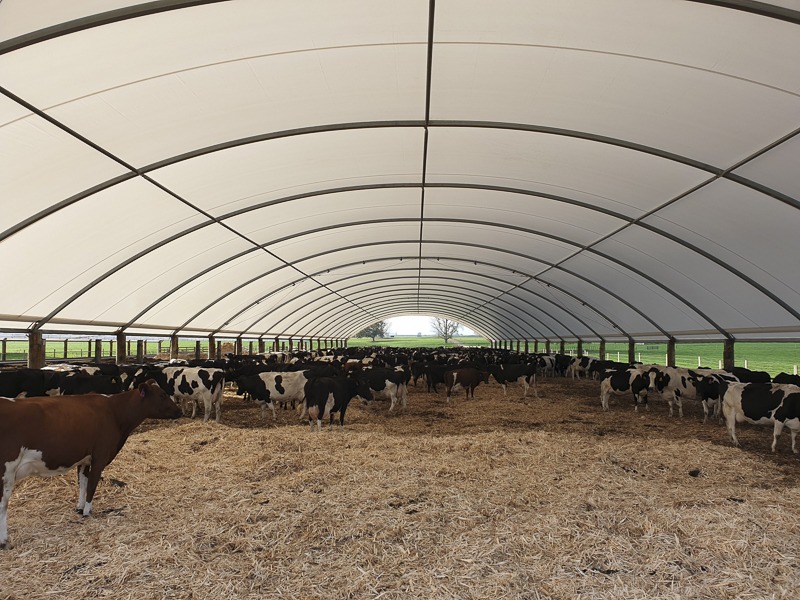Technology and change go hand in hand – and these days, the same can be said about technology and farming. Mobile phones, drones, cow wearable monitoring devices, precision agriculture soil sensing devices, composting barns, feeding and drafting systems, and now robotic milking – there have been many changes across dairy farming over the last two decades, as technology has made its impact that’s felt throughout the Western world and beyond, completely changing the landscape of the dairy industry in its wake.
Dairy farming has come a long way since the days of manual milking and traditional herd management practices. Nowadays, many farmers are asking how to best use dairy farming technology to increase their operational efficiency, while simultaneously seeking to improve the health and welfare of their herd.
In this article we will:
- Take a look at the role of technology on dairy farm
- Explain how robotic milking and feeding systems can improve milk yields
- Look at how modern farming methods can work with technology to increase operational efficiency and improve the welfare of a herd
The role of technology on a dairy farm
When utilised correctly, the right technological tools can enhance the productivity and financial sustainability of any farming operation – big or small. But with so many emerging technologies and conflicting opinions, a good number of farmers simply want to know how to get the best out of the available technology currently on the market and to have an idea of what’s coming around the corner, so they can future-proof their farming operation and make strategic economically sound purchasing decisions moving forward.
Modern farming – a science and an art
Farming is as much a science as it is an art form for the modern agriculturalist – with technology playing an increasingly important role in both aspects.
From a scientific point of view, there is now rigorous monitoring and analysis available through the use of wearable electronics. These electronics are often called cow wearables, which typically are worn on the ear or collar of each cow and fall under the IoT wearable category – smartwatches like Fitbit, and monitoring devices are consumer equivalents.
In addition to drones and mass data collection through the use of smart devices like mobile phones, tablets, and automated detection systems, cow wearables help to cement the idea of the “connected cow”. This level of information allows farmers to make critical decisions regarding the health of their herd, whether it be trialing new supplemental feed or simply moving cattle to a new pasture and adjusting their rotational grazing practices, taking much of the guesswork (and many of the headaches) out of farming.
The method of how farming is conducted has also seen many technological changes take place in recent years – robotic milking, feeding systems, composting barns, drafting systems, and more. The art of dairy farming is certainly evolving in line with the “connected cow” advancements in monitoring, resulting in better milk production for farmers who adopt and embrace this new technological frontier.
What is robotic milking and how can it improve milk yields?
Arguably the biggest dairy farming technological advancement impacting the art of dairy milking is the advent of the rather ominous sounding concept of ‘robotic milking’. Rather than Terminator robots marching around ruling the herd with an iron hand, or swarms of autonomous semi-sapient drones buzzing about holding pails of milk, robotic milking is a catch-all generic term most commonly used to describe an Automatic Milking System (AMS). The AMS is an automated system which completes the entire milking process with no direct assistance or intervention of milking staff, and there are now over 35,000 robotic milking systems operational on dairy farms worldwide.
It should be noted that robotic milking systems are not cheap – a robot that will milk between 50 to 70 cows per unit will sit somewhere in the vicinity of $250,000 NZD per machine. Given the substantial investment required, it makes sense to safeguard such systems from environmental damage with a purpose-built protective shelter.
We have a great range of high quality farming shelters available to cater to every modern farming need. Contact us today to learn more.
Although considerable setup and investment is required in the first instance, farmers who have shifted to AMS or other robotic milking systems say that the system soon pays for itself with increased milk output, lower staff wages (or greater staff efficiency as they can spend the time elsewhere), and greater animal welfare. You reap what you sow, it would seem.
Benefits of robotic milking systems
The key benefit to robotic milking, aside from cutting out the labour and time intensive task of milking itself (thus giving farmers more time to tend to the farm), is the increased milk production that has been reported across the board as between 2.26kg (5lbs) to 3.6kg (8lbs) per cow, per day. This increase comes from two elements: The first is the milking frequency from 1 or 2 times a day to 3 or more per day – the cow chooses how frequent they want to be milked. This is referred to as “barn effect”, which in essence simply means that dairy cattle spend less time away from the pen in more comfortable stalls and within their stable social groups, resulting in greater livestock welfare.
A secondary benefit of a robotic milking system is that dairy cows are less likely to get infections in their udders, and undergo less stress owing to the voluntary rotation of the automated system, resulting in less downtime, more consistent milk production, better livestock welfare, and greater operational efficiencies.
How can modern farming methods improve sustainability and milk production?
By combining innovative technological advancements with modern farming methods such as feeding systems, drafting systems, and composting barns, farmers can optimise the sustainability of their farming ecosystem, boost milk production, and adapt more responsible farming practices that lead to higher returns.
But such changes are not for the faint of heart – just like with pasture management, there is certainly a good deal of groundwork involved to achieve such transformation. However, given the time sensitive nature of dairy farming, and farmers’ already constrained work schedules, these transformative changes are often best carved up into smaller projects to make them not only more manageable, but more so actually achievable, and not just an idea that you had once and half-enacted a long time ago.
Farmers who can utilise the technology that is now readily available will come out on top in the long run, as their dairy farm becomes a more efficient operation, so too will they see increased profit margins – all the while maintaining high standards of livestock welfare and reducing their environmental footprint.
Two of the front-running ideas in modern farming are feeding systems and composting barns – as the next two sections will explain.
Pros and cons of the different feeding systems
By having a structured approach to ensuring that cows receive the proper nutrition to produce high quality milk, feeding systems play a crucial role in the success of a modern dairy farm.
There are three typical feeding systems used, each with its advantages and disadvantages:
Total Mixed Ration (TMR) system – In a Total Mixed Ration system, all the feed components are mixed together to provide a balanced diet. The Total Mixed Ration system ensures that cows receive a consistent and balanced diet, but are known to be labour-intensive and often require specialised equipment. Farmers utilising a Total Mixed Ration system will typically cover the feed with a feed pad barn, such as those produced by SmartShelters.
Partial Mixed Ration (PMR) system – A Partial Mixed Ration system combines a balanced mix of forages and concentrates, with additional supplements provided separately. Partial Mixed Ration systems can be less labour-intensive than Total Mixed Ration systems and offer more flexibility in feeding strategies – they can, however, be more challenging to manage and may not always provide cows with a consistent, stable diet. Covered feed pads are also often used for Partial Mixed Ration systems.
Grazing system – As the name suggests, grazing systems simply allow cattle to graze on pasture, without relying on supplemental feed, providing a natural and cost-effective source of nutrition. While the grazing system can promote better cow welfare, it can also be less predictable, and therefore more challenging to manage, especially during extreme weather events such as sudden heat stress conditions, icy cold fronts, or snowstorms.
The benefit of composting barns
Composting barns are a revolutionary farming invention and represent the future of soft floor cow housing. By providing your herd with clean, dry bedding, composting barns help to improve herd health and allow for increased productivity of winter milking.
In a composting barn, the built-in aerobic system of good bugs actively works to compost cow effluent, which keeps the bedding dry and your herd healthy. Upon removal, the composted bedding is often used as a nutrient-rich fertiliser, giving it a great dual-purpose role on the modern farm.
Composting barns can greatly improve milk yields, with a local New Zealand study cited by Professor Keith Woodford showing increased milk solid production of 380kg (837lbs) to 544kg (1,119lbs) per cow after the use of a composting barn for just one year.
Protect your herd and safeguard your future today
Understanding the future trends most likely to impact farming down the line, and how technological improvements can help drive profitability while benefiting livestock welfare is critical for the modern farmer.
At SmartShelters, our team of dedicated agricultural industry experts are on hand to help farmers learn more about the technological changes taking place in the dairy industry.
Our friendly, knowledgeable team is available to talk through our range of high quality purpose-built covered feed pad barns, composting barns, and farm shelters, helping to protect your animals and technology investments, giving you the peace of mind you need.



















